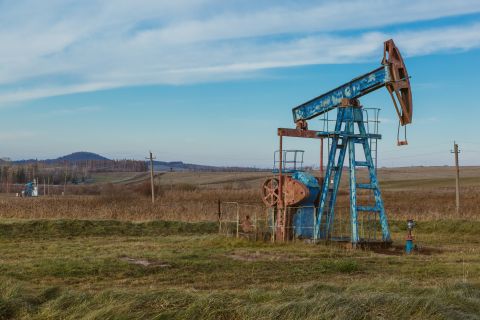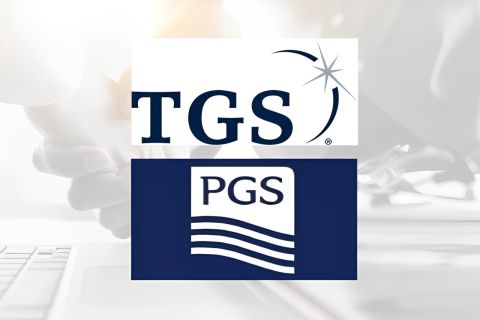Norway's latest licensing round is a prime example of interest in the Barents Sea. It reflects and extends a continuing trend in Norway's recent rounds of renewed interest in its offshore sector, not only because some of the newly released Barents Sea acreage up for grabs lies in Arctic waters but also because it is located adjacent to Russia's own offshore border in formerly disputed territory between the two countries. It is this area that many see as the 'New Norway.'
The country launched its 22nd licensing round earlier this year when the Norwegian Petroleum Directorate (NPD) sought nominations from oil and gas companies looking to carry out exploration activity in previously untouched northern waters, both in the northern Norwegian Sea and the Barents Sea.
Encouraged by state-owned operator Statoil's large Skrugard (7220/8-1) and Havis discoveries (which together contain reserves estimated between 400 MMboe and 600 MMboe), and its resultant plans for an aggressive exploration campaign in the surrounding vicinity, a record level of interest was registered by 37 companies with 228 blocks nominated for inclusion.
Almost all of the interest was in Norway's northernmost areas (181 nominations were for the Barents Sea alone), confirming that the upstream industry sees the Barents and the wider Norwegian offshore sector as an attractive prospective province in what is an increasingly competitive global exploration market.

A bright spot for Statoil – the Aker Barents semisubmersible rig drilled a high-impact discovery well in the Barents Sea on the Havis oil prospect, adding extra reserves and commerciality to the operator’s development plans for its Skrugard discovery, which is being studied for a potential floating production project. (Images courtesy of Statoil ASA)
To further illustrate the recent trend of growing interest, aside from the 37 companies that nominated blocks in the 22nd licensing round, a total of 43 companies nominated blocks in the country's 21st round, as well as 46 doing likewise in the 20th round. These last three licensing rounds compare favorably with the preceding ones, when only 19 companies nominated blocks in the 19th licensing round, a paltry 14 in the 18th round, and 16 in the 17th round.
The government's efforts to renew interest in its offshore sector by offering frontier acreage in the Barents Sea is paying dividends, and this is reflected by Norway's energy ministry deciding to offer a total of 86 blocks and part-blocks for bid, including 72 in the Barents sector.
"More exploration is now taking place throughout the southern Barents Sea, and there is renewed optimism and expectation of discoveries. This licensing round will contribute to maintaining the activity level in this area and to clarifying the resource potential in the Barents Sea," said Sissel Eriksen, NPD exploration director, in the agency's official press release when the round was announced.
With the deadline for bid submissions set for December, awards are expected to be made by mid-2013 at the latest. The other 14 blocks and part-blocks are in the Norwegian Sea, but it is the northernmost blocks in the
Barents that hold the most interest. Much of the reason for this is that the Arctic holds about 13% of the world's undiscovered conventional oil and 30% of its undiscovered natural gas, according to the US Geological Survey.
This was a significant driver behind the Norwegian-Russian Delimitation Agreement that was sealed between the countries in 2010 and came into force last year, settling a decades-long border row between the two.
Following that agreement, Norway is hoping to open the southern part of the formerly disputed area for potential licensing in the 23rd licensing round.
Several of the blocks in the 22nd round already lie close to the maritime border between Norway and Russia, with one – 7231 – located directly on the border. Russia already has positioned itself to be potentially involved in Norway's latest round, with Lukoil having already prequalified last year for operations in Norwegian waters and Russia's state-owned Rosneft lined up to cooperate with Statoil in certain blocks.

Recoverable resources contained in new discoveries made in 1H 2012 offshore Norway (Preliminary resource figures: low-high estimate; data courtesy of Statoil)
Norway is keen to progress its Barents Sea activities as quickly as possible, with the NPD already acquiring 2-D seismic data in the northeastern part of the Barents. In all, approximately 14,300 km (8,708 miles) of seismic data will be acquired in this area using the vessel Artemis Atlantic, which is expected to complete the shoot by October. The ship was busy acquiring seismic in May and June this year in the southeastern part of the Barents Sea.
The area now being surveyed by the NPD is in the formerly disputed maritime border area between Norway and Russia. This is the first time seismic has been shot in this part of the Barents.
NPD Director General Bente Nyland said in an official statement that Norway's production rate is still high, with the country being the world's seventh largest exporter of oil and second largest exporter of natural gas in 2010. However, with oil production declining, she stressed the need – in conjunction with continuing efforts to further enhance oil and gas recovery rates from existing fields – to carry out more exploration both in already open areas as well as other areas not yet made available.
"Nearly 40% of petroleum production on the Norwegian shelf in 2030 will come from discoveries not yet made," she said. "The number and size of the discoveries will determine the level of future production. Even though significant discoveries have been made recently in both mature and immature acreage, the potential for making major discoveries is probably greater in parts of the unopened areas than in those already opened."
With the greatest expectations centered on the Barents Sea, Nyland added, exploration activity also eventually will be carried out in its eastern and northern areas.
By the end of June 2012, a total of 19 exploration wells had been spudded on the Norwegian shelf, consisting of 13 wildcats and six appraisals.
Out of these wells, a total of seven new discoveries have so far been made – four in the North Sea, two in the Norwegian Sea, and one in the Barents Sea.
In the North Sea, three discoveries contained oil and are located in the northern part, while the last was a gas/condensate discovery proven in well 2/4-21 in the southern North Sea. The two largest and most promising were Wintershall's oil discovery in well 35/9-7 (the Skarfjell prospect) in the Gj?a area and the gas/condensate discovery in well 2/4-21 (the King Lear prospect) operated by Statoil in the southern North Sea.
In the Norwegian Sea, gas was proven in well 6507/7-15 S (the Zidane 2 prospect) operated by RWE Dea near the Heidrun field. Maersk also made a small oil discovery in well 6406/3-9 (the T–Rex prospect).
In the Barents Sea, Statoil made an oil and gas discovery in well 7220/7-1 (the Havis prospect) near the Skrugard discovery. This is the largest discovery made on the Norwegian shelf so far this year.
Recommended Reading
Brett: Oil M&A Outlook is Strong, Even With Bifurcation in Valuations
2024-04-18 - Valuations across major basins are experiencing a very divergent bifurcation as value rushes back toward high-quality undeveloped properties.
Marketed: BKV Chelsea 214 Well Package in Marcellus Shale
2024-04-18 - BKV Chelsea has retained EnergyNet for the sale of a 214 non-operated well package in Bradford, Lycoming, Sullivan, Susquehanna, Tioga and Wyoming counties, Pennsylvania.
Triangle Energy, JV Set to Drill in North Perth Basin
2024-04-18 - The Booth-1 prospect is planned to be the first well in the joint venture’s —Triangle Energy, Strike Energy and New Zealand Oil and Gas — upcoming drilling campaign.
PGS, TGS Merger Clears Norwegian Authorities, UK Still Reviewing
2024-04-17 - Energy data companies PGS and TGS said their merger has received approval by Norwegian authorities and remains under review by the U.K. Competition Market Authority.
Energy Systems Group, PacificWest Solutions to Merge
2024-04-17 - Energy Systems Group and PacificWest Solutions are expanding their infrastructure and energy services offerings with the merger of the two companies.




